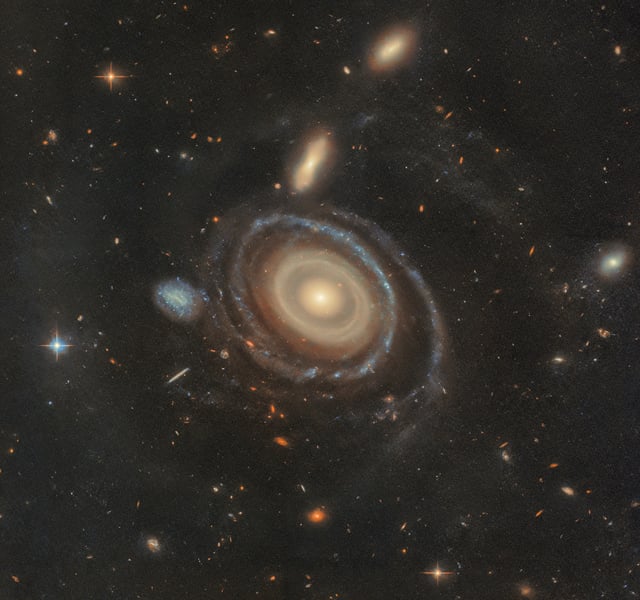Overview
- The Bullseye Galaxy, officially known as LEDA 1313424, has nine rings, the most ever observed in a galaxy, with eight identified by Hubble and a ninth confirmed by Keck Observatory data.
- The rings were created by a smaller blue dwarf galaxy that pierced through the Bullseye's core, triggering waves of star formation and leaving a thin gas trail linking the two galaxies, now 130,000 light-years apart.
- The galaxy is 250,000 light-years across, making it 2.5 times larger than the Milky Way, and its rings are unevenly spaced, with inner rings clustered and outer rings more spread out.
- The discovery validates long-standing theoretical models predicting how rings propagate outward following such collisions, with the first two rings forming rapidly and subsequent rings appearing in staggered intervals.
- Researchers believe the Bullseye may have once had a tenth ring and anticipate that future telescopes like NASA’s Nancy Grace Roman Space Telescope will uncover more galaxies with similar structures.
